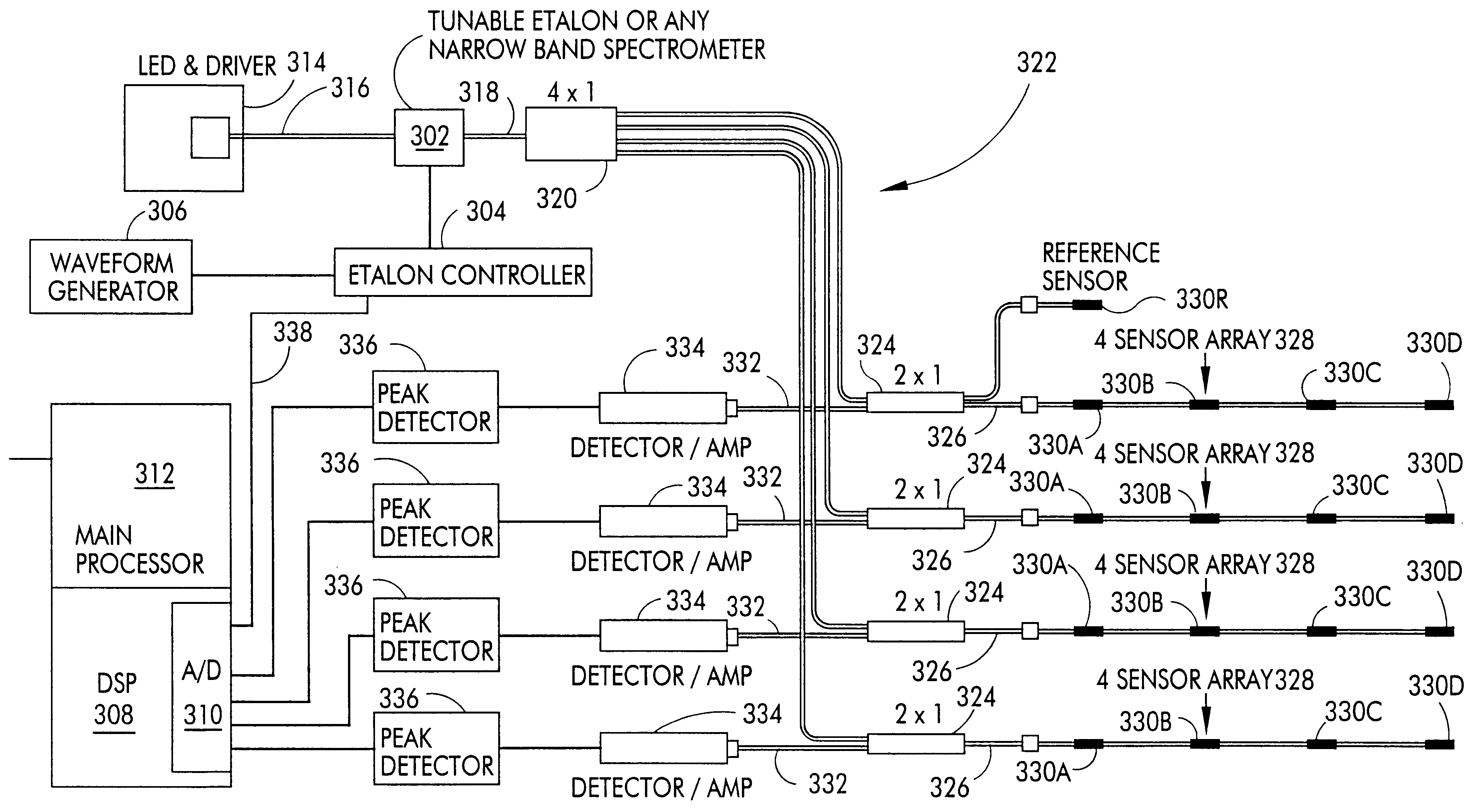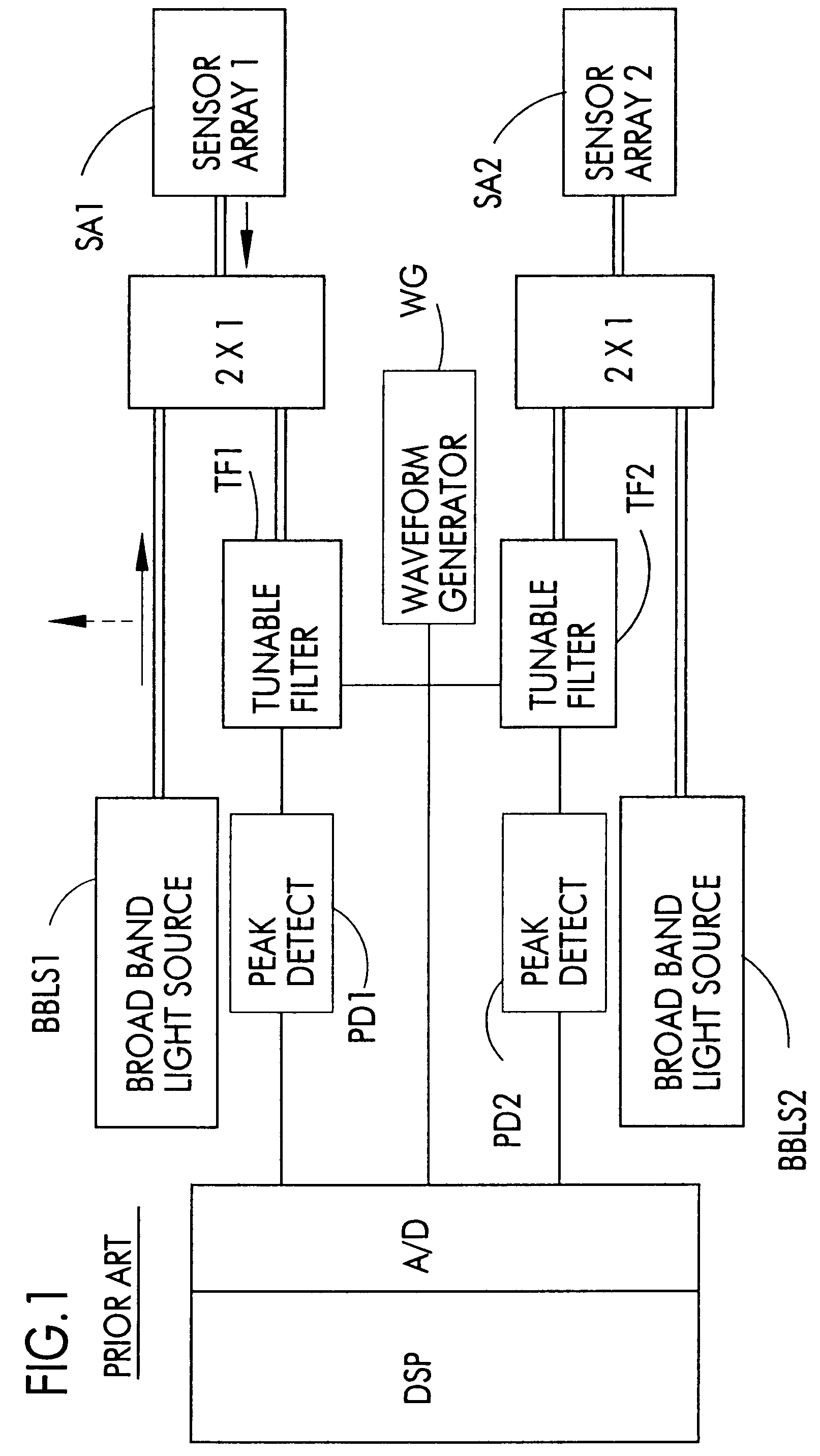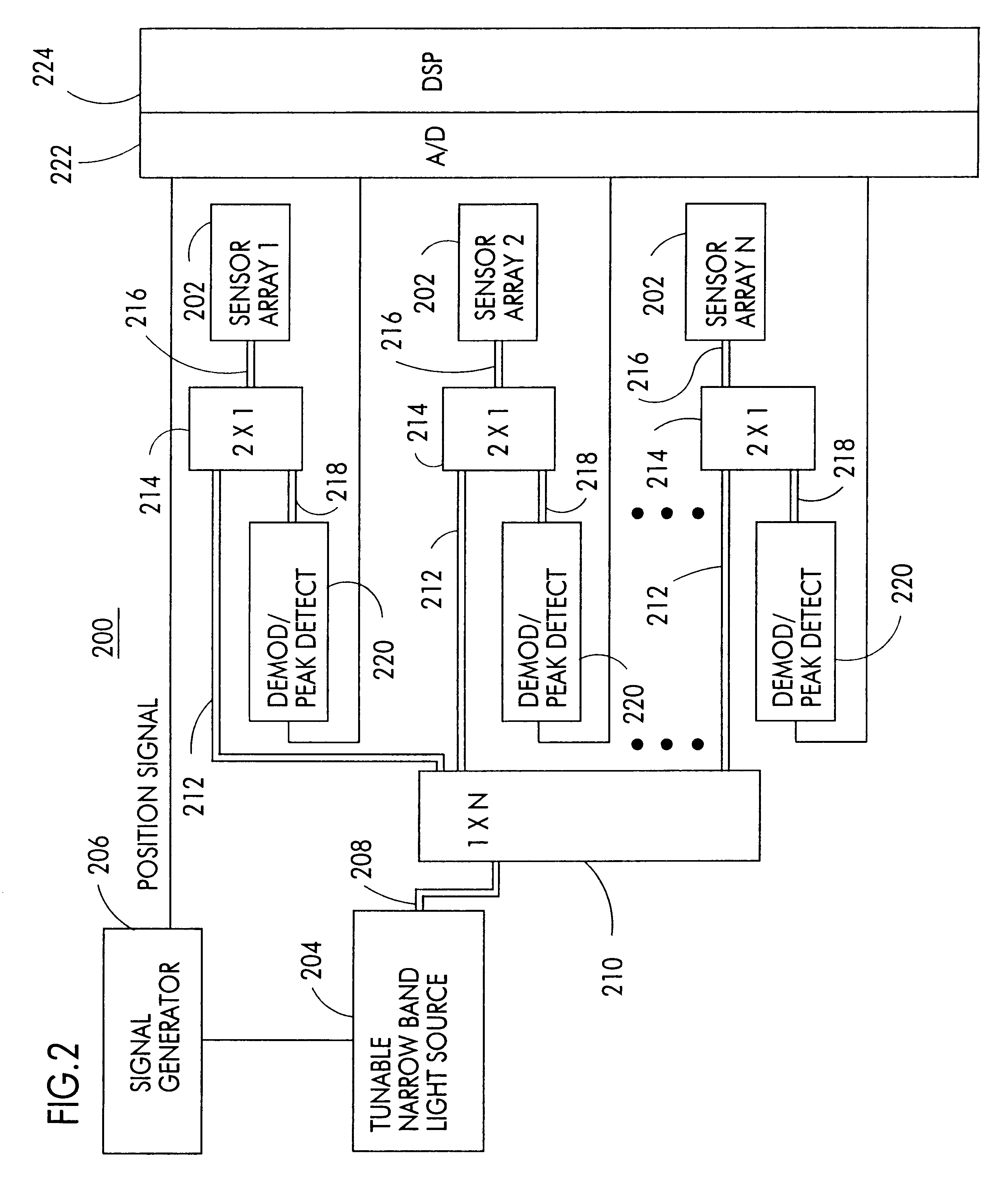Optical fiber sensor system
a technology of optical fiber and sensor system, applied in the field of optical fiber sensor system, can solve the problems of inflexible and expensive ability to detect different parameters of prior systems which employ such sensors, inability to detect different parameters, and high volume and weight, so as to reduce system weight and size, reduce weight, and reduce cost
- Summary
- Abstract
- Description
- Claims
- Application Information
AI Technical Summary
Benefits of technology
Problems solved by technology
Method used
Image
Examples
Embodiment Construction
Referring to FIG. 2, a block diagram of one preferred embodiment of an optical fiber sensing system 200 according to the invention including N sensor arrays 202 is illustrated. Although the system 200 is illustrated as having N channels, it is contemplated that it may have one or more channels. Preferably, each array 202 is a plurality of Bragg grating sensors either connected in series (in line) or in parallel.
Each sensor of the array 202 is configured to transmit data or sense a particular or different parameter of the device being monitored at various locations. For example, if the system 200 is monitoring an aircraft, a first sensor of array 202 may be a Bragg grating sensor which detects strain at a first location; a second sensor of array 202 may be a Bragg grating sensor which detects strain at a second location; a third sensor of array 202 may detect temperature and so on. It is also contemplated that Bragg sensors may be used to detect other parameters, such as corrosion or...
PUM
| Property | Measurement | Unit |
|---|---|---|
| wavelength | aaaaa | aaaaa |
| wavelength | aaaaa | aaaaa |
| FWHM | aaaaa | aaaaa |
Abstract
Description
Claims
Application Information
 Login to View More
Login to View More - R&D
- Intellectual Property
- Life Sciences
- Materials
- Tech Scout
- Unparalleled Data Quality
- Higher Quality Content
- 60% Fewer Hallucinations
Browse by: Latest US Patents, China's latest patents, Technical Efficacy Thesaurus, Application Domain, Technology Topic, Popular Technical Reports.
© 2025 PatSnap. All rights reserved.Legal|Privacy policy|Modern Slavery Act Transparency Statement|Sitemap|About US| Contact US: help@patsnap.com



